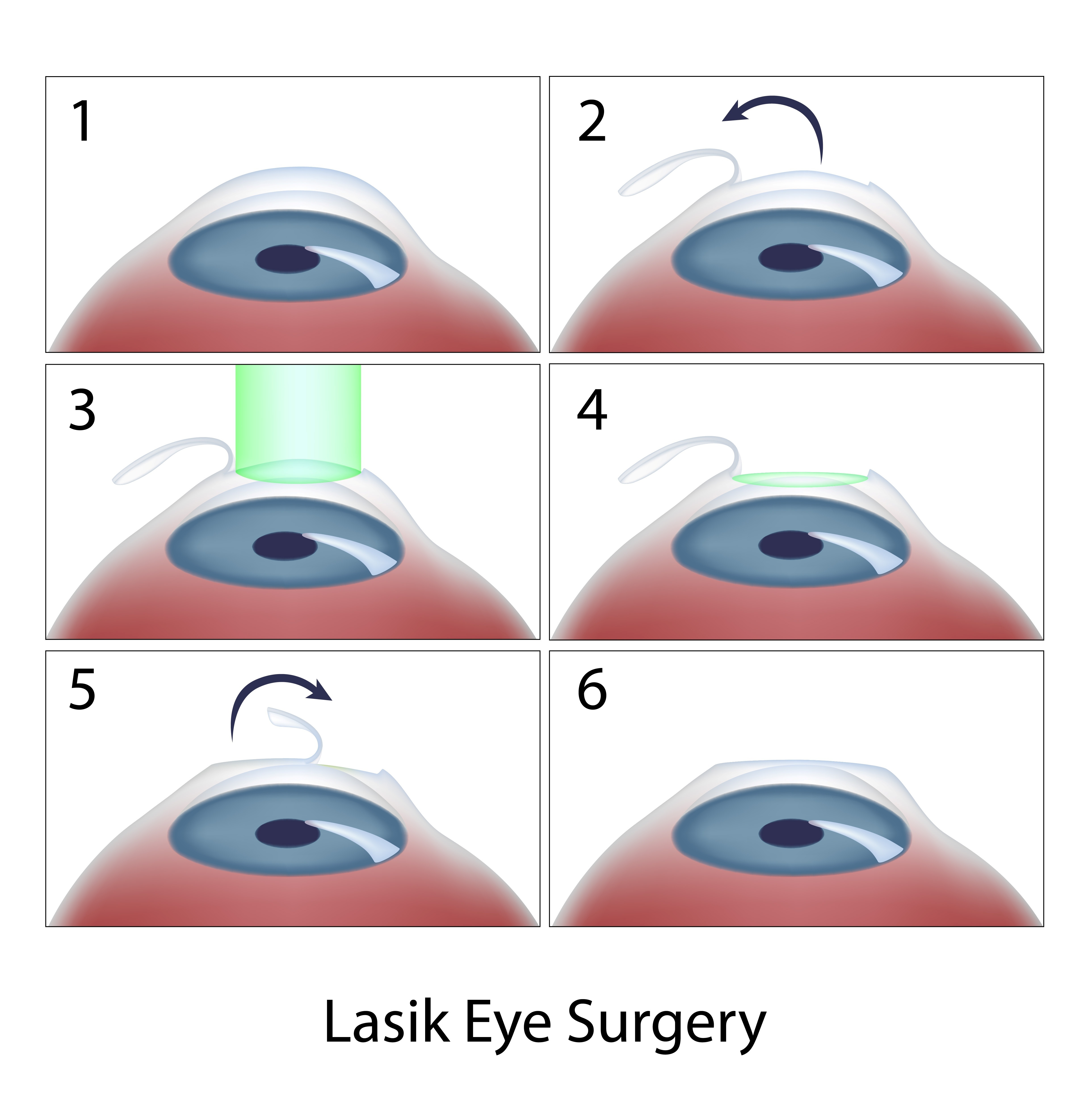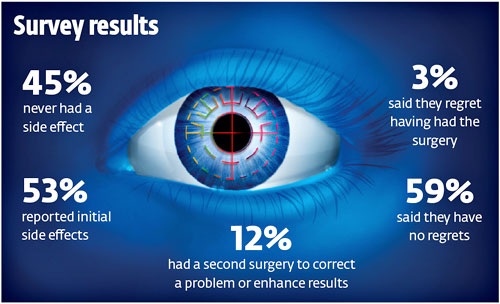So you’re 40-ish, and your eyes are starting to act up on you. Or perhaps you’re younger and/or too vain to wear glasses. Or you have a phobia about having anything in your eyes, so contacts just aren’t an option. There are many different scenarios that lead one to consider Lasik surgery, but what do you really know about it? It is worth the considerable cost (and risks)?
What is LASIK? What is it trying to accomplish?
LASIK (Laser-Assisted In Situ Keratomileusis; you’re supposed to ignore the order of the letters) is a surgical procedure that permanently changes the shape of the outer covering of the eye (the cornea) in an effort to reduce one’s dependency on glasses or contact lens. It does this by positioning your eye apparatus to bend light rays so they focus better on your retina, producing vision that is clearer and sharper. I’ll defer the details of the procedure to the attached video.
How will I know if I’m a candidate?
The testing is pretty involved but in general, it is worth getting evaluated if you have one of the following conditions. The shape of your eyes (i.e., longer, shorter, flatter) may prevent light rays from hitting the retina optimally. When this is the case, your vision (focus) will be off one way or another.
- Nearsightedness (myopia) is having more clear vision for objects that are closer compared to those further away.
- Farsightedness (hyperopia) is having more clear vision for objects that are further compared to those closer.
- Astigmatism is a disruption of both near and distant vision due to unevenness in the cornea.
So should I consider it a medical procedure or cosmetic surgery?
You’d do well to have a healthy fear of any surgery, especially on your eyes. Your ophthalmologist (eye doctor) should explore non-invasive options before offering surgery. However, when you choose or need it, the result can be pleasing when a skilled and experience surgeon does it.
So what are the risks?
As with any surgery, LASIK eye surgery carries risks:
- Undercorrections and overcorrections. Optimal results require removal of a rather exact amount of tissue. If not done, your vision won’t be quite clear. If too little tissue (undercorrection) was done, an enhancement surgery may help.
- Vision returning to pre-surgery vision. Over time, your eyes may worsen and even go back to the level of vision you had before surgery.
- Visual loss or changes. Surgical complications can lead to worsening or loss of vision.
- Astigmatism. Astigmatism is a result of unevenness in the cornea. It can be produced by uneven tissue removal during surgery.
- Glare, halos, double vision and difficulty seeing at night.
- Dry eyes. LASIK causes a temporary decrease in tear production. The resulting dryness in your eyes can negatively affect your vision.
- Flap problems. The process of folding or removing the flap in the front of your eye during surgery can lead to infections, inflammation and excess tears.
Your eye doctor will discuss your risks and the potential benefits of LASIK surgery. It’s estimated that more than eight of 10 who undergo the procedure are able to forego contacts or glasses – for the majority of their activities. I welcome your questions or comments. Enjoy the following video, courtesy of the U.S. Food and Drug Administration.
Thanks for liking and following Straight, No Chaser! This public service provides a sample of 844-SMA-TALK and http://www.SterlingMedicalAdvice.com (SMA). Enjoy some of our favorite posts and frequently asked questions as well as a daily note explaining the benefits of SMA membership. Please share our page with your Friends on WordPress, on Facebook at SterlingMedicalAdvice.com and on Twitter at @asksterlingmd.
Copyright © 2014 · Sterling Initiatives, LLC · Powered by WordPress


